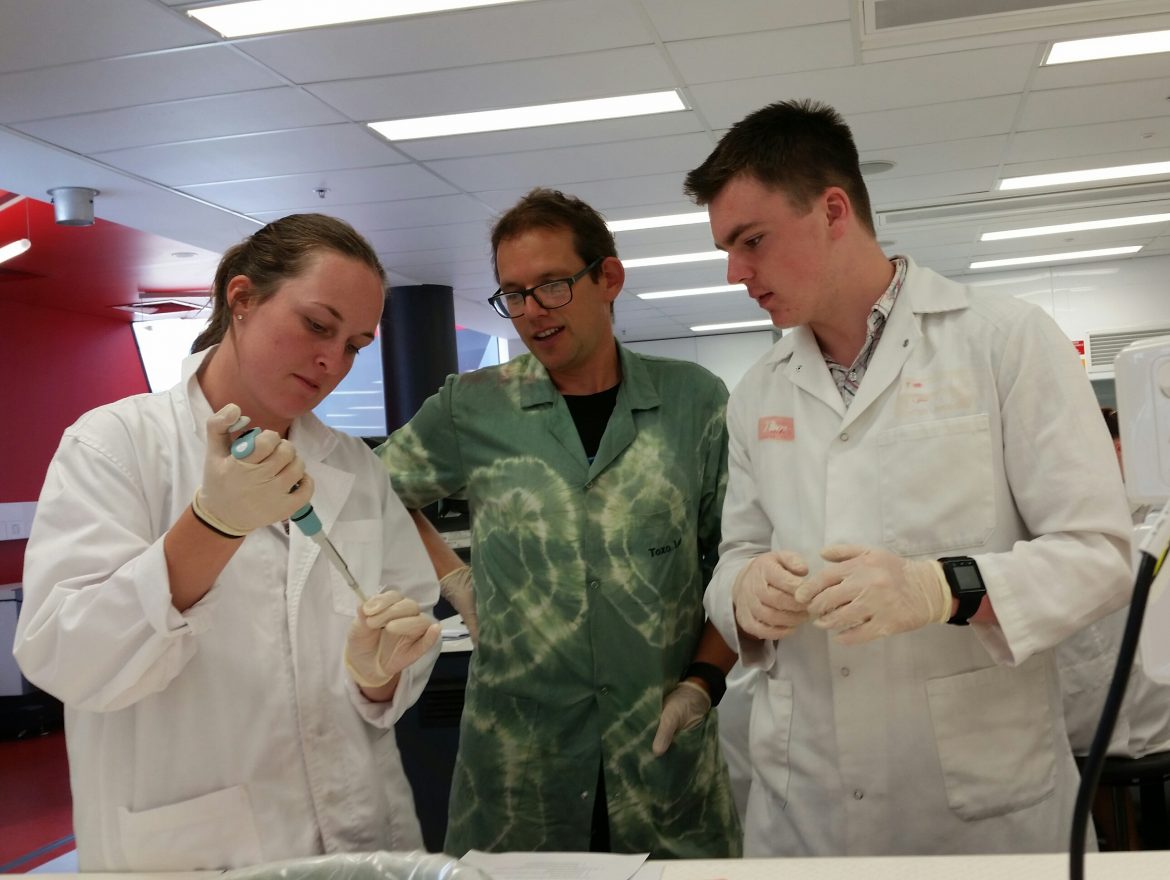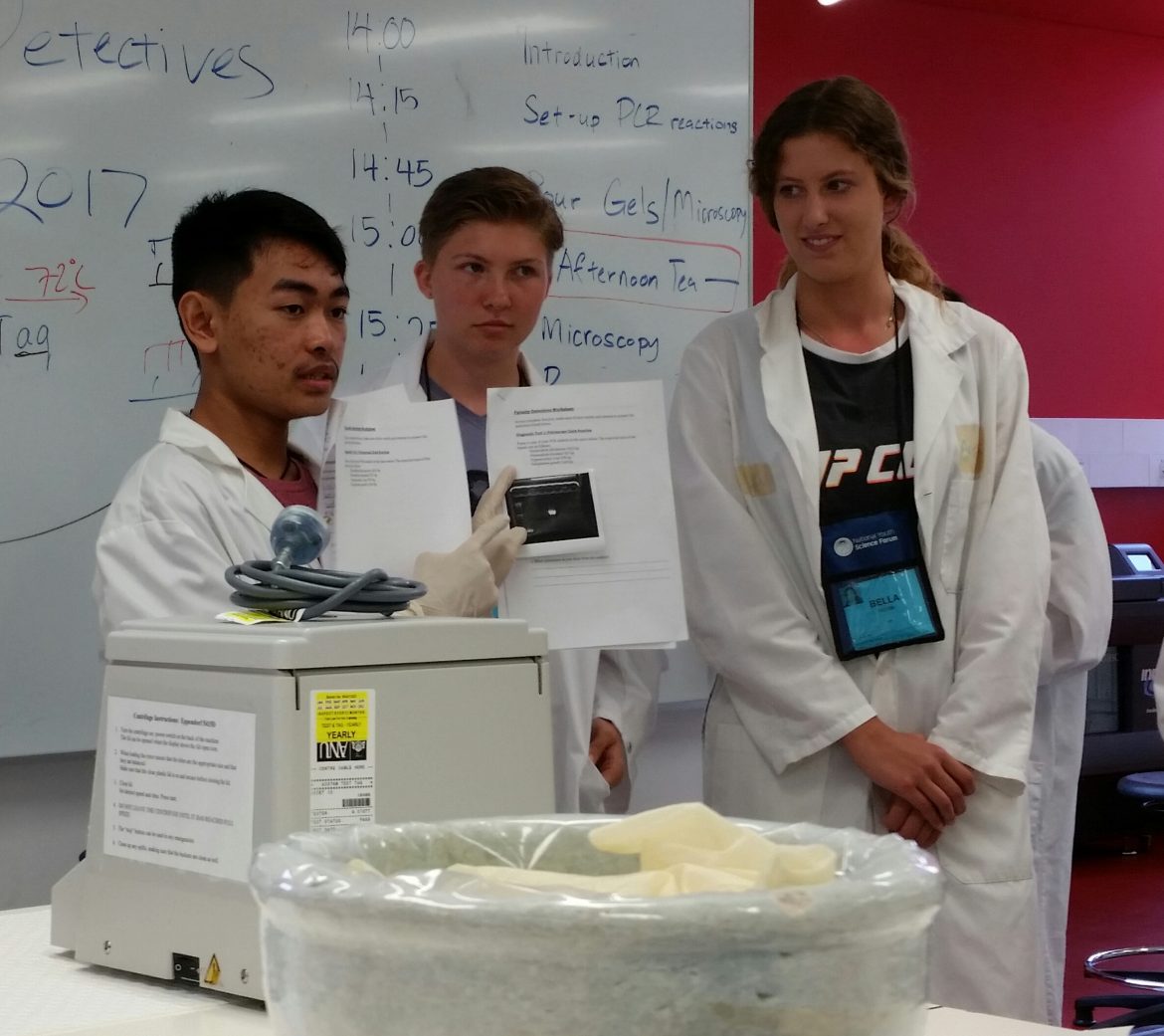The NYSF 2017 Food, Agriculture and Animal & Plant Biology group ‘Hill’ visited the Van Dooren Lab this afternoon, located in ANU’s Research School of Biology. Hosted by Dr Giel Van Dooren and his team of postgraduate students, the Hill group spent anafternoon learning about parasitology.
Parasitology is the study of parasites, organisms that feed off a ‘host’ organisms, usually with negative effects to this host. The group was specifically looking at protozoan parasites, single-celled organisms that are found in the bodies of hosts, and often with the host’s own cells. The four parasites the participants were focusing on in the Van Dooren Lab are known to be responsible for malaria, chagas disease and toxoplasmosis.
The participants had to determine what parasite was infecting a ‘patient’, with one assigned to each group of four. The participants had to examine blood and tissue samples of a patient, through microscopy, as well as conduct a polymerase chain reaction (PCR) experiment. Each patient also had a scenario attached, to help narrow down what parasite it could be, such as ‘she has recently travelled to the rainforests of Borneo, and upon her return has begun to have headaches, fevers, and chills’.

Dr Van Dooren teaching students how to use the mechanical pipette
Firstly, the group used the PCR technique on DNA from the patients. PCR is a process that replicates DNA, which is then pipetted into an agarose gel solution plate and exposed to an electric field. The field causes the DNA molecule to migrate through the gel, with smaller molecules moving faster than larger ones. This is photographed and shows as ‘bands’ of DNA, with infected patients, containing parasitic DNA as well, showing extra ‘bands’. The actual PCR process can take about an hour after being set up, but the participants were excited to try this new technique, which also meant using tools they had never used before.
Whilst the PCR was running, the group used microscopy to examine the blood and tissue samples. As most protozoan parasites enter their host’s cells, they can often be seen easily under the microscope, and can even give an estimate of how long the patient has been infected. Once the PCR results were found, the group then sat with their demonstrators and discussed the literature behind the parasites, including prevention, treatment, and the struggle for treatment as parasites become resistant to drugs. Groups then presented their findings, combining results from microscopy, PCR, and based on the scenario given, to the rest of participants, including the prognosis and treatment of their patients.

Participants presenting their findings
To Find out more about Dr Van Dooren and his work, check out the university website: http://biology.anu.edu.au/research/labs/van-dooren-lab-cell-biology-and-metabolism-apicomplexan-parasites.
Meg Stegeman, Communications Intern NYSF 2017 Session C and NYSF Alumna 2014